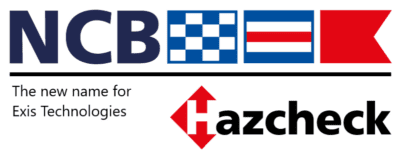TT Talk – Be competent handling dangerous goods – there’s an app for that!
The IMDG Code mandates training for all shore side staff involved in consigning dangerous goods for sea transport. Requiring training is straight-forward, delivering it effectively is a challenge. While there are no short cuts, there are an increasing number of aids to ensure that nobody really has excuses for compromising safety in the supply chain.
Increasing efforts are being made to bring transparency to what is being carried in the ubiquitous metal boxes and other cargo transport units that are moved around the globe – at least in some quarters of the supply chain.Whether it is tightening regulations, actions by enforcement agencies, experts seeking to clarify and disseminate packing information, safety initiatives by liner companies or use of latest technology, the focus is on reducing mis-consigned goods.
It must be rare today for stakeholders in the transport of goods, particularly those that are classified as dangerous, not to be aware of stories and images of accidents, both at sea and on land. Of course, that was the motivation behind mandating shore side training in the IMDG Code. It is somewhat galling to hear on the grapevine that the TT Club’s threefold advice is not achieving traction. International law calls for training to a level of competency – which is as far from a ‘wing and a prayer’ as it is possible to go.
Over the last decade, IMO statistics – compiled from inspections of declared dangerous goods shipments by Competent Authorities – continue to reveal about one third non-conformities in respect of placarding and marking, and 15% deficiencies in documentation. Given this level of mistake, together with the unknown number of undeclared shipments, it is surprising that there are not more accidents. There is no room for complacency – unsafe is always unsafe, even where the risk has not crystallised.
The TT Club’s advice is that compliance with the current IMDG Code requires:
- Ensuring that your own relevant employees are competent;
- Informing all your customers and contractors of their obligations to train to an appropriate level of competence; and
- Seeking documentary evidence that all relevant employees of your customers and contractors are trained to an appropriate level of competence.
‘Competence’ – or the ability to do a job properly – is based on both training and on-the-job experience. Where effective training is not already in place and not easily available to you, the Club continues to recommend the e-learning system developed by Exis Technologies, a global provider of computer-based compliance and training solutions for the shipment of dangerous goods by sea. Their certified course, developed by a dedicated team of specialists, is tailored to the IMDG Code requirements for both general awareness and function specific training. Refresher training is also available for those that have already taken an IMDG Code training course. There is a 15% discount off the price of courses for TT Club Members. Further details about the course, including prices, can be found at www.imdge-learning.com.
‘Hazcheck’ Systems for DG in the sea transport chain, also from Exis Technologies, have recently been supplemented by a free mobile ‘app’ – ‘Hazcheck DGL Lite’. Mobile apps are increasing in popularity for both personal and business use, although their use needs to be authorised in many business environments, particularly in relation to the safety of use of ‘personal electronic devices’ in the workplace.
The potential advantages of using apps in business are becoming more apparent with the advance of smartphones. Large volumes of information can be stored on a small device and accessed at any time in a digestible format, including graphics, video, text and user friendly navigation system. Exis Technologies launched ‘Hazcheck DGL Lite’ earlier this year. it displays key information from the IMDG Code Dangerous Goods List.
Entering the UN number or initial letters of a ‘Proper Shipping Name’ (chemical name referenced in the IMDG Code) displays details of the class, sub-risk (if applicable), packing group and labels. The application also contains useful information on each of the hazard classes. Installation on iPhone, Android and Blackberry® devices means that container packers or anybody making on-the-spot checks – including enforcement agencies – can immediately verify key dangerous goods information. Further information about Hazcheck DGL Lite is available from http://www.hazcheck.com/, or you can download it direct from the relevant app store.
This app further strengthens the dissemination of support information, joining materials such as the IMDG Code pocket card produced by TT Club, in collaboration with ICHCA. This is a durable hard copy aid for people dealing with the documentation and markings on packaging and cargo transport units, assisting the checks that are required to ensure that packaged dangerous goods are safely conveyed.
It is probably worth reminding readers that there is a general insurance principle that assureds will act prudently by complying with regulations, such as those relating to dangerous goods.







